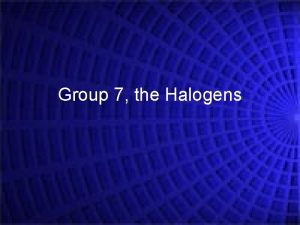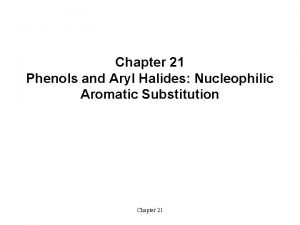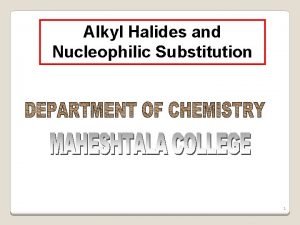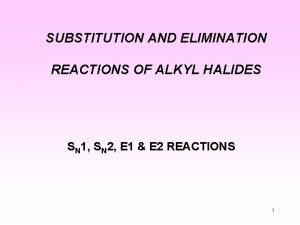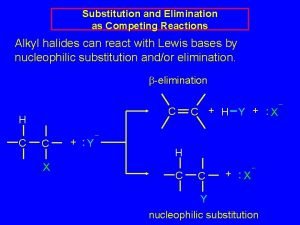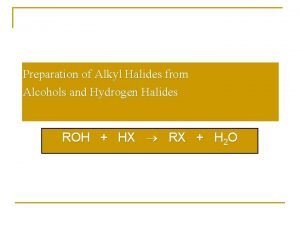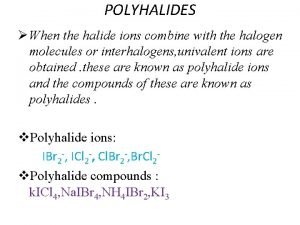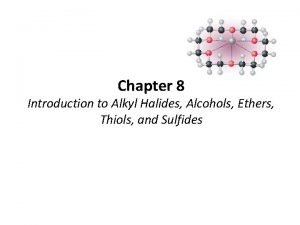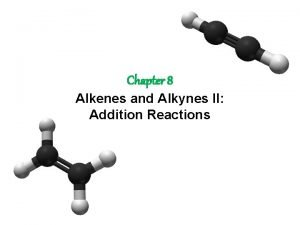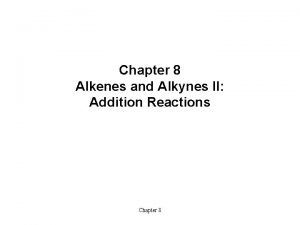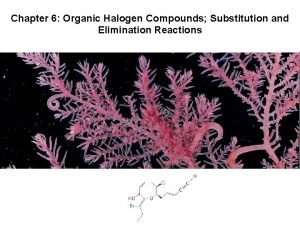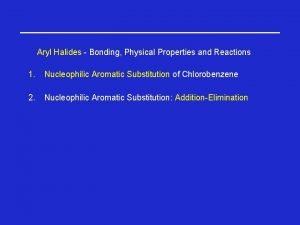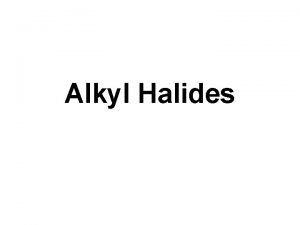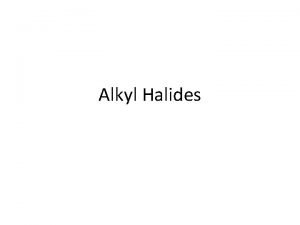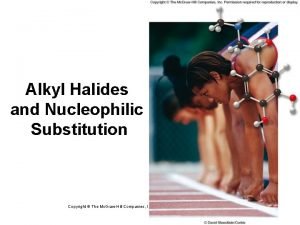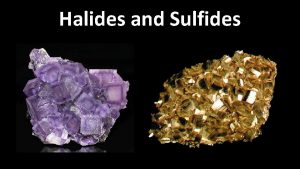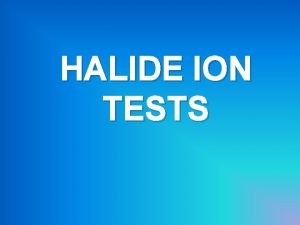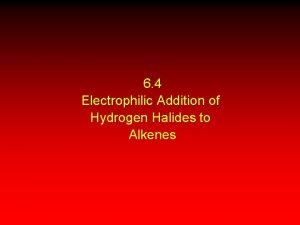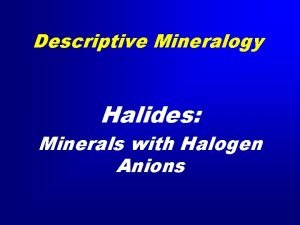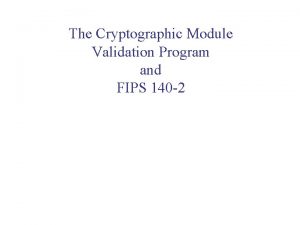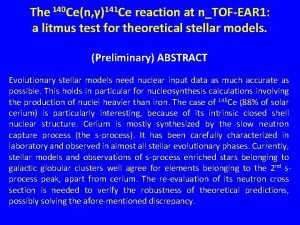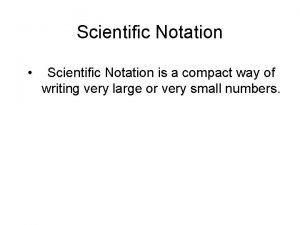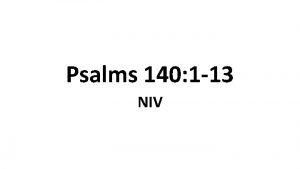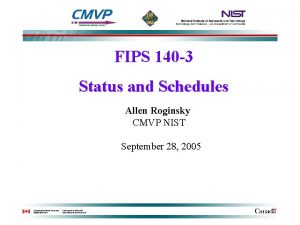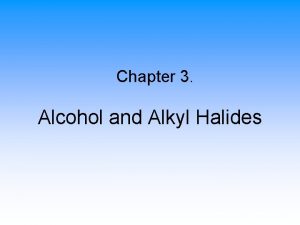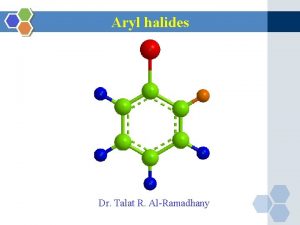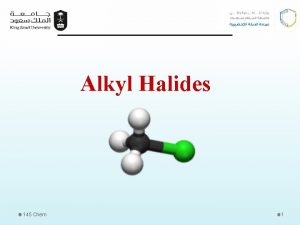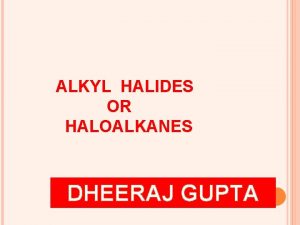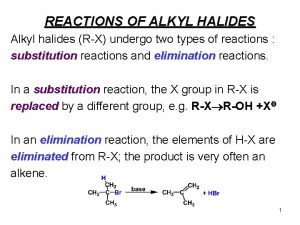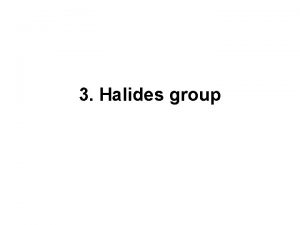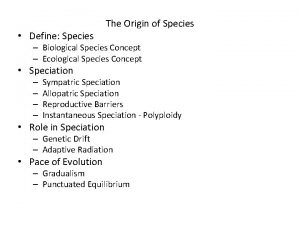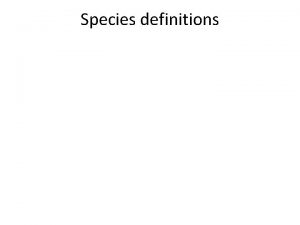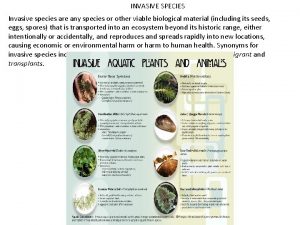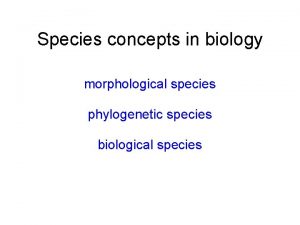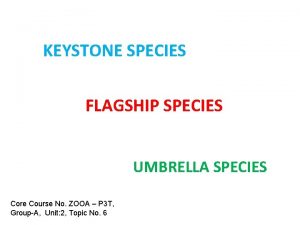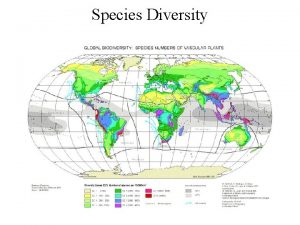Halides and Sulfides Halides Only 140 known species



![Halite (Na. Cl) Structure • Cations and anions occupy octahedral sites [CN = 6] Halite (Na. Cl) Structure • Cations and anions occupy octahedral sites [CN = 6]](https://slidetodoc.com/presentation_image_h2/44229f96331d060de57946c39b9d6d05/image-4.jpg)




![Cs. Cl Structure • Cations and anions occupy cubic sites [CN = 8] – Cs. Cl Structure • Cations and anions occupy cubic sites [CN = 8] –](https://slidetodoc.com/presentation_image_h2/44229f96331d060de57946c39b9d6d05/image-9.jpg)









![Sphalerite (Zn. S) Structure • Cations and anions occupy tetrahedral sites [CN = 4] Sphalerite (Zn. S) Structure • Cations and anions occupy tetrahedral sites [CN = 4]](https://slidetodoc.com/presentation_image_h2/44229f96331d060de57946c39b9d6d05/image-19.jpg)





![Halite (Na. Cl) Structure • Cations and anions occupy octahedral sites [CN = 6] Halite (Na. Cl) Structure • Cations and anions occupy octahedral sites [CN = 6]](https://slidetodoc.com/presentation_image_h2/44229f96331d060de57946c39b9d6d05/image-25.jpg)












- Slides: 37

Halides and Sulfides

Halides • Only 140 known species • F, Cl, Br, I as large anions • Strong, nearly exclusively ionic bonds • Gridwork, not discrete molecules • Generally isometric structure and form • Fairly low hardness • Many are water-soluble • Conductive via electrolysis (transport of ions), not by electron transport

Halite (Na. Cl) Structure • Fundamentally defined by the formula AX, in which A is a cation with an equal and opposite charge to X, an anion. • There is an equal number of cations and anions, equally balancing charges
![Halite Na Cl Structure Cations and anions occupy octahedral sites CN 6 Halite (Na. Cl) Structure • Cations and anions occupy octahedral sites [CN = 6]](https://slidetodoc.com/presentation_image_h2/44229f96331d060de57946c39b9d6d05/image-4.jpg)
Halite (Na. Cl) Structure • Cations and anions occupy octahedral sites [CN = 6] – RA : RX = 0. 41 – 0. 73

Halite (Na. Cl) Structure • Examples: – Halide Minerals: • Li. F, Li. Cl, Li. Br, Li. I • Na. F, Na. Cl, Na. Br, Na. I • KF, KCl, KBr, KI • Rb. F, Rb. Cl, Rb. Br, Rb. I – Oxide Minerals • Mg. O, Ca. O, Sr. O, Ba. O, Ni. O Sylvite - KCl Periclase - Mg. O – Sulfides • Mg. S, Ca. S, Mn. S, Pb. S Galena - Pb. S

Halite – Na. Cl • Abundant just about everywhere • Precipitates commonly found with gypsum, sylvite, anhydrite and calcite • Isometric habit, cubic cleavage • Obvious use as salt, but also used as ore for both sodium metal and chlorine gas

Sylvite – KCl • Precipitates commonly found with gypsum, halite, anhydrite and calcite, but as a very late precipitate • Distinctly bitter taste • Isometric habit, cubic cleavage • In N. Am. , found in SW US and Saskatchewan, Canada • Common use in fertilizers

Cs. Cl Structure • Fundamentally defined by the formula AX, in which A is a cation with an equal and opposite charge to X, an anion. • There is an equal number of cations and anions, equally balancing charges
![Cs Cl Structure Cations and anions occupy cubic sites CN 8 Cs. Cl Structure • Cations and anions occupy cubic sites [CN = 8] –](https://slidetodoc.com/presentation_image_h2/44229f96331d060de57946c39b9d6d05/image-9.jpg)
Cs. Cl Structure • Cations and anions occupy cubic sites [CN = 8] – RA : RX = 0. 73 – 1

Cs. Cl Structure • Examples: – Not Commonly Found in Nature – Halide Compounds: • Cs. Cl, Cs. Br, Cs. I – Ammonium Halide Compounds • (NH 4)Cl, (NH 4)Br – (NH 4)1+ group occupies A-site Salammoniac – NH 4 Cl

Fluorite (Ca. F 2) Structure • Fundamentally defined by the formula AX 2, in which A is a cation with ½ and the opposite charge to X, an anion. • There are half as many cations as anions, combined to equally balance charges

Fluorite (Ca. F 2) Structure • Examples: – Halide Minerals: • Ca. F 2, Sr. F 2, Ba. F 2 • Cu. F 2, Cd. F 2 • Sr. Cl 2, Ba. Cl 2 – Oxides • Zr. O 2, Hf. O 2, Ce. O 2, UO 2 Fluorite – Ca. F 2 Frankdixonite– Ba. F 2 Uraninite – UO 2

Fluorite– Ca. F 2 • Isometric crystal form, classic octahedral cleavage • Fluoresces under black-light • Typically yellow, purple, or green, also clear, red, brown, blue, etc. • Usually hydrothermal, also as a gangue mineral with Ag/Pb ores • Commonly associated with dolomite and calcite

Cryolite – Na 3 Al. F 6 • Monoclinic: 2/m • Crystals are rare • Hardness: 2 ½ • Colorless-to-white • Powdered cryolite will disappear when submerged in water

Cryolite – Na 3 Al. F 6 • Critical use processing Al-ore into pure metal • Used to be mined from a large deposit in Ivigtut, Greenland, now depleted – Only mineral to be mined to the point of commercial extinction

Atacamite – Cu 2 Cl(OH)3 • Orthorhombic – 2/m 2/m • Hardness = 3 - 3 ½ • Found only in extremely arid, copper-enriched regions – Chile, Australia, and Arizona • Used as a minor copper ore – Copper-concentration makes it one of the very few stronglycolored halide minerals

Sulfides (and arsenides) • Dominant ion is S 2 • Includes most metallic ore minerals • Most are opaque • Commonly have diagnostic streaks – like some oxides • Ionic and covalent bonding, even some metallic bonding Common structure types include sphalerite (Zn. S) and Halite (Na. Cl)

Sphalerite (Zn. S) Structure • Fundamentally defined by the formula AX, in which A is a cation with an equal and opposite charge to X, an anion. • There is an equal number of cations and anions, equally balancing charges
![Sphalerite Zn S Structure Cations and anions occupy tetrahedral sites CN 4 Sphalerite (Zn. S) Structure • Cations and anions occupy tetrahedral sites [CN = 4]](https://slidetodoc.com/presentation_image_h2/44229f96331d060de57946c39b9d6d05/image-19.jpg)
Sphalerite (Zn. S) Structure • Cations and anions occupy tetrahedral sites [CN = 4] – RA : RX = 0. 32

Sphalerite (Zn. S) Structure • Each tetrahedral site shares corners with three bordering tetrahedra of the same type

Sphalerite (Zn. S) Structure • Structure also shared (in a way) with diamond • C 4+ and C 4 bonding with only tetrahedral sites

Sphalerite (Zn. S) Structure • Examples: – Sulfide Minerals: • Zn. S, Cu. Fe. S 2 – Silicon Carbide (Si. C) Sphalerite - Zn. S – Diamond Chalcopyrite – Cu. Fe. S 2 Diamond - C

Sphalerite– Zn. S • Isometric mineral: 43 m • Structure is based around four-fold coordination of both cations and anions • Unique dodecahedral {011} cleavage • Distinctive range of yellow-brown streaks • Low-T polymorph vs. high-T structure: Wurtzite • Typically used as zinc ore

Chalcopyrite – Cu. Fe. S 2 • Tetragonal: 42 m • Structure is derived from Zn. S structure, but in a doublestack, with Cu-based and Febased unit cells alternating • Most-abundant copperbearing mineral – used as ore • Common igneous and hydrothermal mineral
![Halite Na Cl Structure Cations and anions occupy octahedral sites CN 6 Halite (Na. Cl) Structure • Cations and anions occupy octahedral sites [CN = 6]](https://slidetodoc.com/presentation_image_h2/44229f96331d060de57946c39b9d6d05/image-25.jpg)
Halite (Na. Cl) Structure • Cations and anions occupy octahedral sites [CN = 6] – RA : RX = 0. 41 – 0. 73 • Sulfide Examples: – Galena (Pb. S) – Pyrite (Fe. S 2)

Galena – Pb. S • Isometric: 4/m 32/m • Halite structure, with Pb 2+ substituting for Na 1+, and S 2 - substituting for Cl 1 • Very high density: SG ~7. 5 • Often in hydrothermal veins with silver-based minerals • Commonly found in MVT deposits with sphalerite (Zn. S) • Used as lead ore

Pyrite – Fe. S 2 • Isometric: 2/m 3 • Typically cubic or pyritohedral habit • Lacks prominent cleavage • A variant on the Na. Cl structure, where Fe substitutes for Na, and S 2 groups substitute for Cl • Most common sulfide mineral – Found in all rock types – Best large, structural crystals at Ambasaguas and Navajun, Spain

Marcasite – Fe. S 2 • Orthorhombic: 2/m 2/m • Polymorph of pyrite – Arrangement of ions is skewed, similar to rutile (Ti. O 2) structure • Unstable, very easily oxidized to limonite as coating • Deposited from low-T, acidic solutions • Often found with lead and zinc ores in veins

Arsenopyrite– Fe. As. S • Monoclinic: 2/m, – Pseudo-orthorhombic • Similar structure to marcasite (Fe. S 2), but with ½ of the S 2 - replaced by As 3 • Most-common arsenic-bearing mineral • Found with Sn and W ores in high-T hydrothermal deposits – Also found with ores of silver, copper, gold, and other common sulfides (Pb. S, Zn. S, Fe. S 2, etc. )

Pyrrhotite – Fe 1 -x. S • Monoclinic: 2/m at low-T • Hexagonal: 6/m 2/m at high-T • Structural deficiency of iron relative to sulfur – x in formula is between 0 and 0. 2 – Cation layer is in hexagonal closest packing, alternately filled or partially-filled • Found in alkali-poor igneous rocks (ex: norites)

Chalcocite – Cu 2 S • Monoclinic, Pseudo-orthorhombic: 2/m or m below 105°C • Distinct crystals are quite rare – Tabular habit when observable – Usually fine-grained or massive • Hexagonal packing of sulfur atoms at low-T – High-T form, high chalcocite, allows structural gaps to be filled • Crucial copper ore mineral

Bornite– Cu 5 Fe. S 4 • Tetragonal: 42 m • Usually massive, rarely pseudocubic crystals • Extensive solid-solution within Cu-Fe-S system • Known for its purple-blue-green tarnish – Peacock ore

Molybdenite – Mo. S 2 • Hexagonal: 6/m 2/m • Crystals form in hexagonal plates, or in short prisms • Structure of Mo sheets between S sheets, then stacked S-Mo-S polytypes – Mo in trigonal prismatic six-fold coordination • Found in many settings, but altogether fairly rare • Slight purple shade of grey • Principal ore of molybdenum

Cinnabar – Hg. S • Hexagonal: 32 • Typically rhombohedral, prismatic or massive • Completely unique structure of Hg-S-Hg spiral chains along c-axis • Frequently includes impurities of clay and bitumen, and Fe-oxide • Highest-density common rock-former: SG = 8. 1, but a very low hardness, like Galena: 2 - 2 ½

Stibnite – Sb 2 S 3 • Orthorhombic: 2/m 2/m • Classic form is elongate, striated (along {100}) prisms, often radiating • Strong {010} cleavage • Zig-zagging chains of closely-bonded Sb and S atoms in highly-distorted polyhedra parallel to c-axis • Classic locality, Iyo, Japan, has been depleted • Found in low-temperature hydrothermal veins, and with other antimony minerals formed by decomposition of the stibnite

Realgar – As. S Orpiment – As 2 S 3 • Both are monoclinic: 2/m • Realgar forms in ringlike groups of As 4 S 4, like S 8 – Each As bonds to two sulfurs, and to another As • In Orpiment, trigonal As. S 3 pyramids link corners to make six-member, corrugated rings, As 2 S 3 • Both were used in pigments until their poisonous nature was widely recognized

Next Time… Oxides and Hydroxides
 Can plants be keystone species
Can plants be keystone species What is taxon
What is taxon What does the term “halogen” mean?
What does the term “halogen” mean? Alkyl aryl
Alkyl aryl Nucleophilic substitution mechanism
Nucleophilic substitution mechanism Take only photographs leave only footprints
Take only photographs leave only footprints Solvents for sn2 reactions
Solvents for sn2 reactions Elimination reaction conditions
Elimination reaction conditions Nucleophilic substitution of alkyl halides
Nucleophilic substitution of alkyl halides Preparation of alkyl halides from alcohols
Preparation of alkyl halides from alcohols Classification of polyhalides
Classification of polyhalides Alcohols nomenclature
Alcohols nomenclature Is acid catalyzed hydration syn or anti
Is acid catalyzed hydration syn or anti Addition of hydrogen halides to alkynes
Addition of hydrogen halides to alkynes Nucleophilic substitution of alkyl halides
Nucleophilic substitution of alkyl halides Aryl halife
Aryl halife Alkene to alkyl halide
Alkene to alkyl halide B2h6/diglyme
B2h6/diglyme Reaction of alkyl halides
Reaction of alkyl halides Halide mineral examples
Halide mineral examples Test for halides
Test for halides Addition of hydrogen halides
Addition of hydrogen halides What are halides
What are halides Halides minerals
Halides minerals 80 sayısının 40'ı kaçtır
80 sayısının 40'ı kaçtır Gifted iq
Gifted iq Fips 140-4
Fips 140-4 Ce-140
Ce-140 How to solve a scientific notation
How to solve a scientific notation Psalm 140
Psalm 140 Pergub 140 tahun 2011
Pergub 140 tahun 2011 Podaj długości promieni kół o obwodach
Podaj długości promieni kół o obwodach Kap 140 autopilot
Kap 140 autopilot What emotion affects drivers the most
What emotion affects drivers the most Fips pub 140-3
Fips pub 140-3 Cse 140
Cse 140 Cse 140
Cse 140 What does 5'2 140 lbs look like
What does 5'2 140 lbs look like


